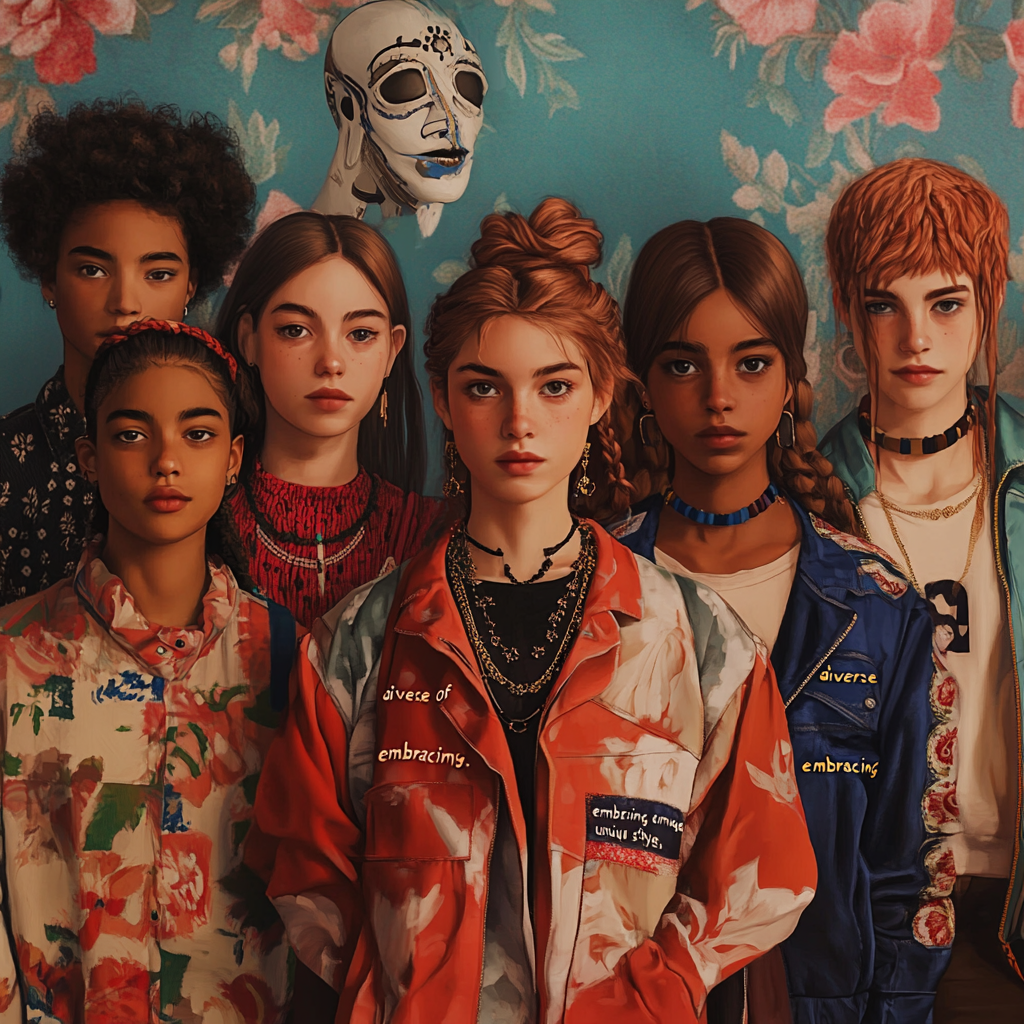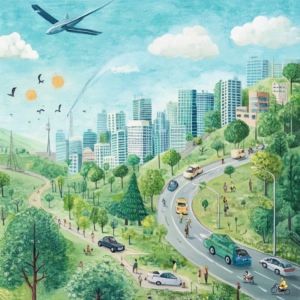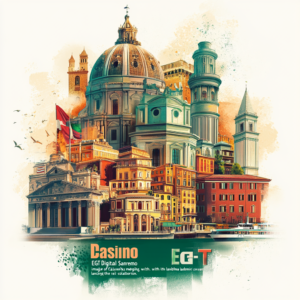
“Pixelated Perfection: The Youthful Ideal in AI Art”
The Ideal Youth: Peering Through the Digital Canvas of AI-Generated Imagery
Welcome to a brave new world, where technology sashays into our lives, making magic that dances cheek to cheek with reality. Just when you didn’t think life could get any more surreal, along comes AI, whipping up images that are as polished as a Hollywood star on Oscar night. Ever heard of DALL-E 3? If not, let’s dive into the theater of algorithms, where pixels meet perceptions and idealized youth struts around like it owns the place. Buckle up, because today, we’re peeling back the layers on a study from Discourse & Society that shakes up what we think about beauty, diversity, and the glossy sheen of digital imagery.
The Study: Unpacking the DALL-E 3 Phenomenon
Enter Professor Gunhild Kvåle from the University of Agder and her ally Gustav Westberg from Örebro University, who decided to give DALL-E 3 a stern talking-to. Their mission? To decode this visually seductive tool that has infiltrated ChatGPT's canvas. With the precision of art critics at the Louvre, they scrutinized what kind of youthful spirits DALL-E 3 conjures up. Spoiler alert: there’s more to these images than meets the eye.
Key Findings: The Patterns of Perfection
First, let’s dish on what the researchers found. DALL-E 3 may boast a buffet of diversity—think different ethnic backgrounds and gender representations—but peel back that shiny veneer, and you’ll find an unsettling sameness beneath. Here are the four major tick boxes that this AI excels at:
-
Surface-Level Diversity
Sure, the images may flaunt a medley of youth from various cultural backgrounds, dressed in denim and sporting those ever-chic Converse sneakers, looking all cute and chipper. But beneath those perfectly coiffed hairstyles and dreamy smiles lies a cookie-cutter ideal that screams conformity rather than true diversity. Apparently, individuality took a coffee break. -
Happiness Sells
Who doesn’t want an eternal summer, right? According to DALL-E 3, all teenagers are busy socializing, laughing, and living it up—whether they’re studying in idyllic settings, jamming at hip concerts, or cultivating community gardens. But hold up! You won’t catch a single one working their day job or catching some Z's, as these perpetually spirited youths live their best upper-middle-class lives, away from the troubles of reality. -
Almost Real, But Not Quite
Ah, the allure of photography, where light dances just right to create depth and texture! DALL-E 3 pulls off a near-perfect mimicry of authentic images. However, much like a stage magician, it distracts you with dazzling lighting while hiding the messy bits of the backdrop, completely avoiding any unpleasant associations with work or the gritty realities of urban life. It's like the fuzzy filter on your Instagram—everything looks great until you take a closer look.
- The Limitations of Imagination
While DALL-E 3 has the potential to go wild with creativity—imagine kids skating inside whimsical snow globes at the North Pole—it opts instead for a safer, photorealistic route. The result? A world where genuine creativity gets traded for familiarity. What, no dragons or rocket-ships? Nope, just more sparkling smiles, thank you very much.
Cultural Ripples: The Aftermath of Idealized Images
What does this mean for us mere mortals? Let’s be honest, every time you scroll past an AI-generated image that looks like it was lifted from a daydream, the consequences ripple through society and culture.
-
Perpetuating Beauty Standards
Fasten your seatbelts; we're diving into the deep end here. These shiny images promote beauty standards that can mess with anyone's self-image. Just peek at the images from DALL-E 2 or Stable Diffusion: women are often portrayed with impossibly tiny waists, cartoonishly toned abs, and a bust that might make Barbie look a little envious. It’s the kind of visual feast that can send self-esteem crashing into the ground faster than a bad date. -
Cultivating Critical Awareness
Kvåle reminds us that we must keep our critical glasses on. These glossy images don’t capture the true kaleidoscope of human experience; instead, they simplify life into a bland visual monotony. If we’re not careful, our perception of the world risks becoming a tiresome rerun, and frankly, who wants that?
The Human Touch: Longing for Authenticity
In a world blooming with AI art, what do we really crave? Surprise, surprise—über-human emotion. Research from Bowling Green State University cracked the code, revealing that while people occasionally squint to tell the difference between AI-generated and real art, they usually lean toward the handmade stuff. Why, you ask? Here's the twist: it's that delicious concoction of nostalgia, self-reflection, and outright attraction that flows through human art. In contrast, AI-generated pieces can feel a tad vacuum-sealed.
- The Uncanny Valley Effect
The brain is a wondrous yet mischievous thing. Even when we can’t pinpoint differences between authentic and AI-generated art, we can certainly sense an unsettling presence—a feeling that nudges us away from the artificial. Enter the uncanny valley effect, where the nearly human triggers our inner skeptic to cry out, “This doesn’t seem quite right!” Thus, even if we can’t articulate why we gravitate toward human art, there’s no denying its magnetic pull.
Conclusion: A Call to Action
So, as we close the curtain on this mesmerizing exploration of AI-generated images, we’re left pondering big questions surrounding diversity, beauty ideals, and the health of our cultural landscape. The study shines a light on the consequences of accepting these images at face value, reminding us to engage with the content we consume critically.
Stay Sharp: In this whirlwind of AI advancements, keep your wits about you. Here’s where you can dig deeper and keep your knowledge bank thriving:
- Study reveals AI-generated images depict idealized youth
- What AI thinks a beautiful woman looks like
- The Impact of AI-Generated Images On Our Body Image
Be In the Know: As we traverse this digital epoch, let’s arm ourselves with the awareness that nudges us toward authenticity. Now is the time to elevate our visual culture—let’s keep it rich, wild, and true: a beautiful tapestry of the wonderfully imperfect human experience.
Want to stay up to date with the latest news on neural networks and automation? Subscribe to our Telegram channel: @channel_neirotoken

